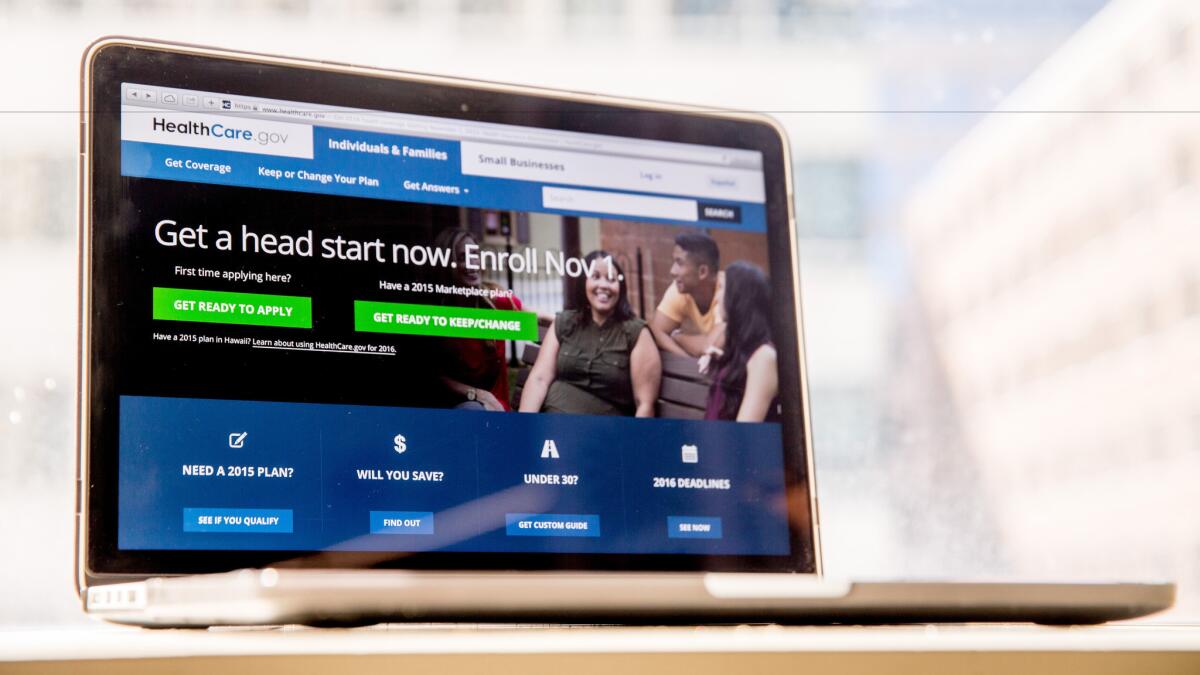Editorial: Growing pains for Obamacare — and its customers

Starting next week, many Americans who buy individual health insurance policies will see big increases in premiums — 25% on average for those who shop at the federally operated exchanges established by the 2010 Affordable Care Act. That’s particularly bad news for those whose incomes aren’t low enough to qualify for large premium subsidies.
The price hikes have renewed calls by Republicans to repeal the law, better known as Obamacare. And there’s no denying that the increases are going to be painful for many working-class Americans who don’t get coverage through their employers.
One key driver of the premium hikes is the disproportionately high cost of covering the people who’ve signed up for Obamacare. Although the law requires virtually all adult Americans to obtain insurance, too many younger, healthier people have either flouted the mandate or chosen to buy the less comprehensive policies that the Obama administration unwisely allowed to remain on the market.
But some states will see much smaller average premium increases, or even decreases, because they’ve found ways to avoid that trap. For example, California (where the average increase will be 13%) barred insurers participating in its exchange from offering policies that effectively pulled healthier consumers into a separate risk pool.
Those states have traced a path to sustainability that the rest of the country should follow. And lawmakers can help by toughening the mandate to obtain insurance, eliminating loopholes that enable people to carry coverage only when they need treatment, and giving those who buy unsubsidized policies on the exchanges the same tax breaks as people who buy insurance through their employers.
Meanwhile, consumers need to be more willing than they have been in the past to change insurance plans — and doctors — to reduce their monthly costs. According to the Obama administration, 76% of the people enrolled in Obamacare could wind up paying lower premiums next year if they switched from their current plan to the lowest cost one in that level of coverage.
Insurers will still have incentives to attract healthier customers, but lawmakers can discourage that sort of cherry-picking — which pales in comparison to what insurers did before Obamacare — by improving the mechanisms in the law to spread costs and risks among insurers.
Policymakers also need to tackle the forces driving up the cost of care, such as rising drug prices and inefficient treatments. That’s a tough challenge, but Obamacare will help by bringing more people into insurance coverage where their care can be managed. The answer to the latest round of premium hikes isn’t to give up on the law’s vital insurance reforms — it’s to make them work better.
Follow the Opinion section on Twitter @latimesopinion and Facebook
More to Read
A cure for the common opinion
Get thought-provoking perspectives with our weekly newsletter.
You may occasionally receive promotional content from the Los Angeles Times.






